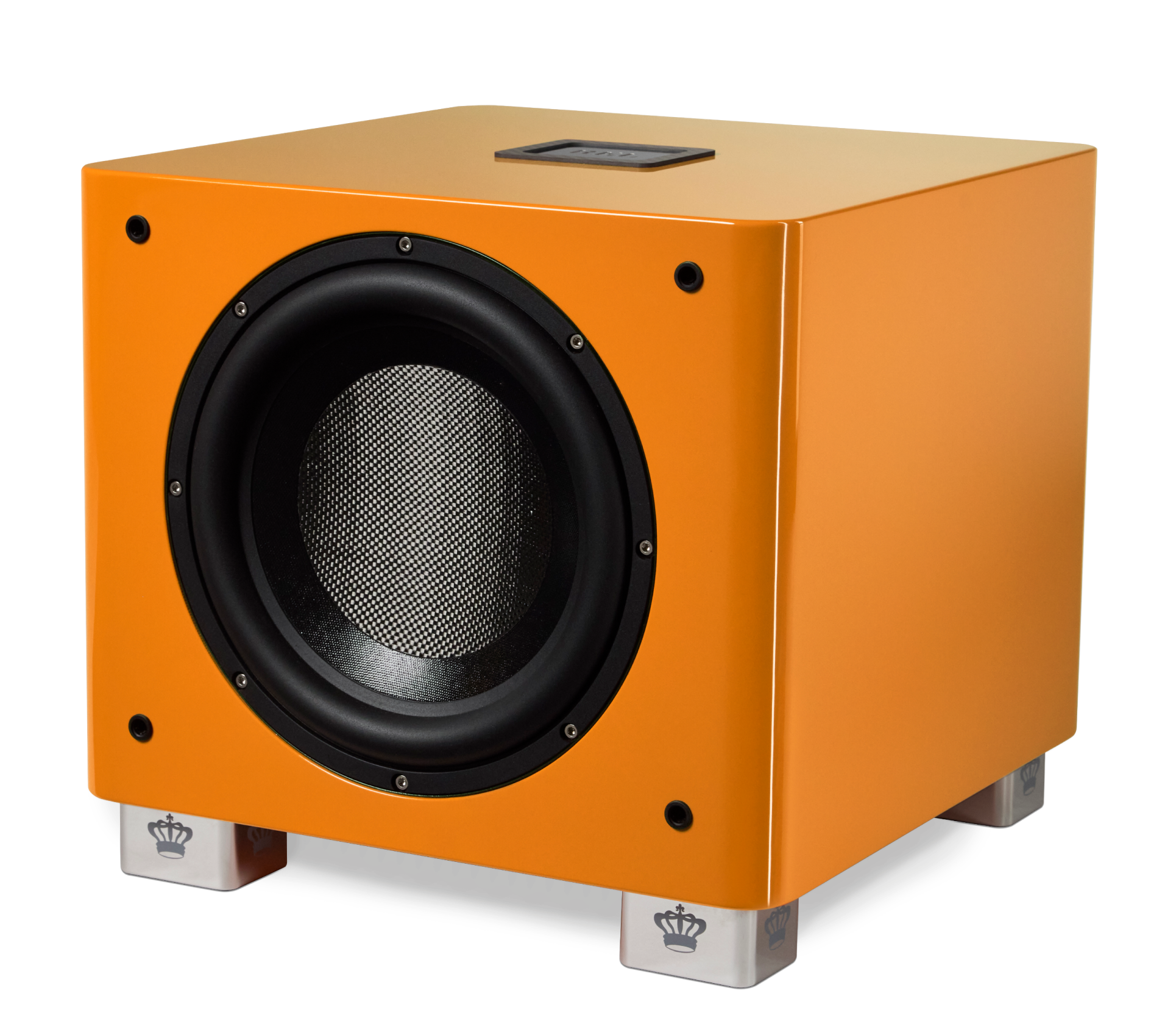Blog
T/5x Video Overview
Stunningly Simple
Hi, John Hunter with REL here. I’m our head designer, and we’re here to introduce you to the T/5x. This is part of our new T/x range. This is baby bear. This is the entry-level into TX. Don’t count it out just because it’s a cute, diminutive little piece. It’s really potent. I’ll explain why. What we’ve got is a high current, 125 watt amplifier. All Watts are not created the same.
This is as though you were buying a 125 watt professional grade monoblock amp. Big power supplies, big transistors, lots of regulation, all the stuff nobody else wants to do. We have a down firing eight inch driver in the T/5x, and we do the down firing because a few things. First of all, it picks up instantly about three decibels, about 20% more output simply by having the floor.
It also provides a really good mechanism for forcing sound out throughout difficult rooms. So when you have a floor coupled buffer, it just allows the sound to sort of permeate effortlessly throughout the whole space works great. The T/5x is an absolutely wonderful piece. It pairs with speakers between $1,000 to $3,000 in the U S maybe £800 to £2,500 in the UK.
And we’ve upgraded every aspect of it compared with the T/i going forward. The T/5x uses a very high powered eight inch drive. As I mentioned before it’s down firing. The T/x drivers were completely redesigned from the outgoing drivers. What we had to do was create something that was much more of a sports car suspension.
It’s much stiffer. The surround is completely redesigned. It’s a larger surround. It has more travel to it, more suppleness to it. So it’s both quicker and stiffer. The spider, which is the hidden component to any driver is a pleaded role that goes and marries up to the back half of the voice coil and keeps that thing moving perfectly pistonicly at all times. We had to use completely new materials, new doping techniques to get this driver to work in these volumes. And the net result is something that outputs about two decibels more than the outgoing one, not a huge amount, but the outgoing one played plenty loud to begin with. And more importantly, it’s so much more articulate.
It’s faster, it starts and stops on a dime. Things like echo decay patterns are much more evident on this, even with the down fire aspect of it. So we’re really proud of this piece and the way that we’ve been able to evolve this design to take advantage of it. Larger cabinet volumes. 125 watt mono block that we use inside this as an amplifier. It’s an amazing piece for not a huge sum of money.
You get a high current class AB amplifier the full deal. Large power supplies. Large toroidal transformers. These heat sinks are not there for gifting. They’re incredibly important to keep this thing regulated. We probably built somewhere north of 120,000 iterations of this model and it just keeps getting better and better.
It has optional wireless that literally plugs in and snugs in here with a couple of lockables. We have high level control. The high level input is responsible for connecting up to your power amplifier and we derive no power from it. Let me assure you, people go that’s magic. It’s true. We take the signal, the Sonic signal from your receiver, from your amplifier, and we use it to essentially preconditioned this piece.
So whatever you’re using is how we would want to sound. The reason we want to sound that way is we’re not there to sound different than your main system. If your speakers and amplifiers sound a certain way, this needs to sound exactly that way. So we have that high level connection built into this piece, even though it’s a very reasonably priced piece, we have the same fast 8 millisecond filters that we use in the more expensive models. This is an enormous amount of quality for a very, very reasonable sum. So, the cabinet is made with the same care that our bigger models are made with everything that goes into our bigger ones goes into this. So, for example, we use real musical instrument style bracing.
These braces are interlocking. They have finger joints where they pass over each other. They’re deeply inset into the MDF. And they’re made out of much stiffer material than the MDF itself. So they work the way the bracing should work. You need something stiff, breaking up the modes of something soft. The things you don’t see, we do. The paint on these is incredible.
It’s five coats, double coated. What I mean by that is our sprayers are taught to spray horizontally and then immediately after that vertically, all the entire cabinet, that’s one. So it effectively becomes 10 coats. We claim five, and what that gives us is incredibly flat mirror like finishes. Everything that you see that looks like aluminum is.
These are very thick, relatively heavy badges and we placed them dead center to take that last little bit of high-frequency resonance that’s in the cabinet and draw that out through this weight and the damping. So the T/5x is really an important piece for a lot of people. It’s not terribly expensive, but it’s exquisitely high-end. When people see these they don’t think, oh my gosh, that’s a really cute little piece that’s not very expensive. It may be the nicest thing in that person’s apartment or home.











